Charger Leise NiMH 2 slots LS-U2C


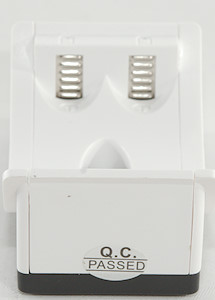
This is a fairly simple dual NiMH charger powered from USB.
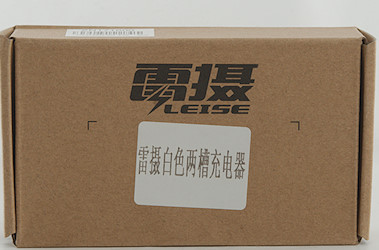


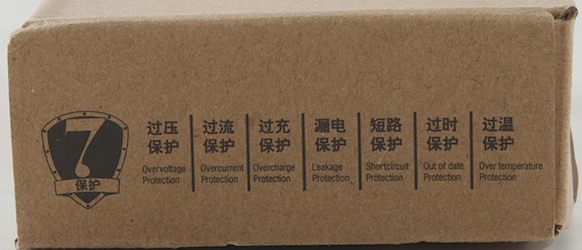
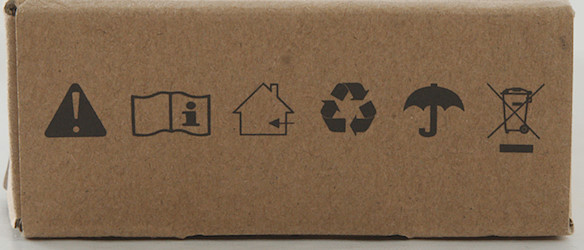
It arrived in a cardboard box with brand name and not not much else on it.
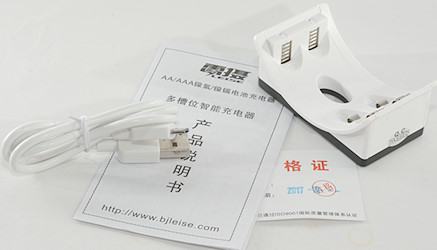
The box contained the charger, a usb cable and a instruction sheet in Chinese.
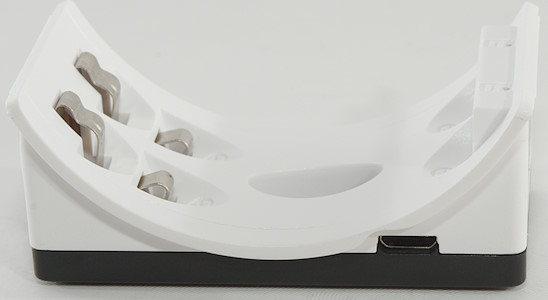
The charger is usb powered with a micro usb input.
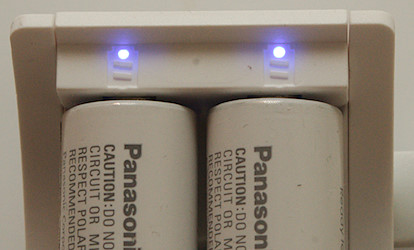
There is a led for each slot that will light up for the 9½ hour a charge takes.
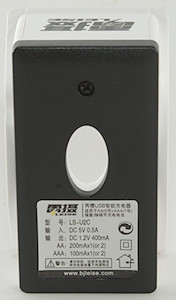
The specifications are on the bottom of the charger.

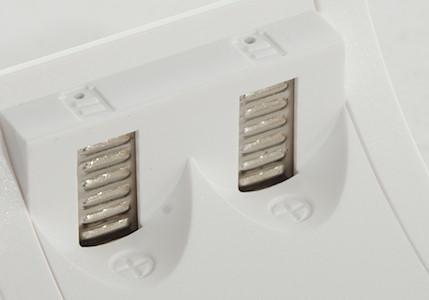
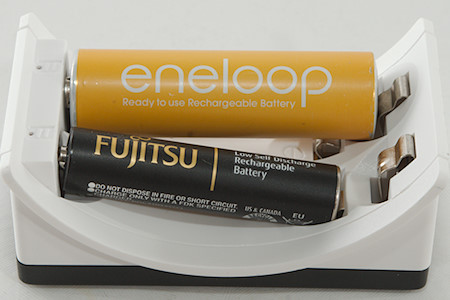
The charger uses the classic two level construction for AA/AAA batteries.


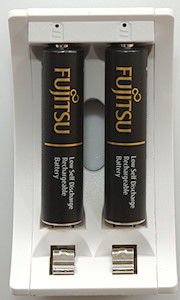
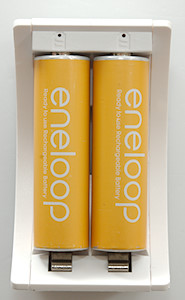
Measurements
-
Power consumption from usb when idle with no batteries is 0.4mA
-
The charge current will depend on battery voltage, see voltage sweep curve below.
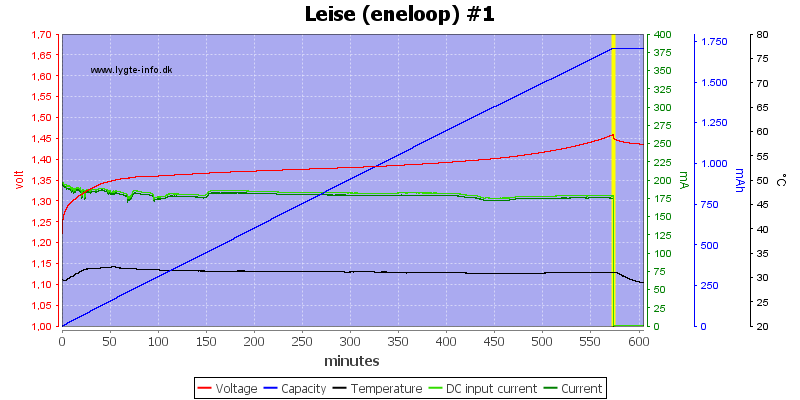
The battery is nearly charged fully in about 9½ hour with a fairly low charge current.
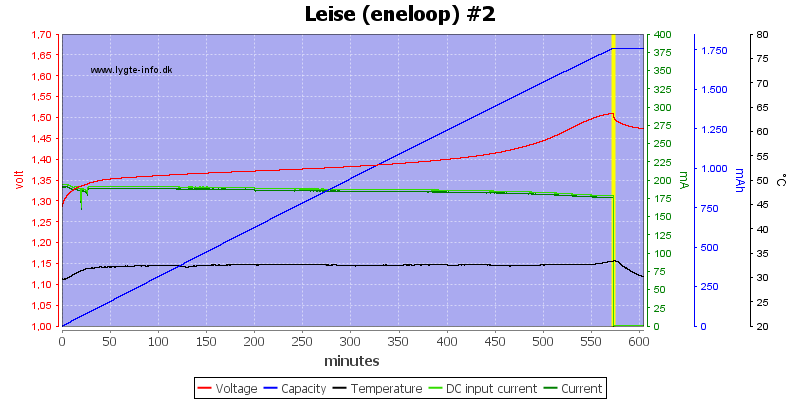
This cell is charged fully, again in 9½ hour.
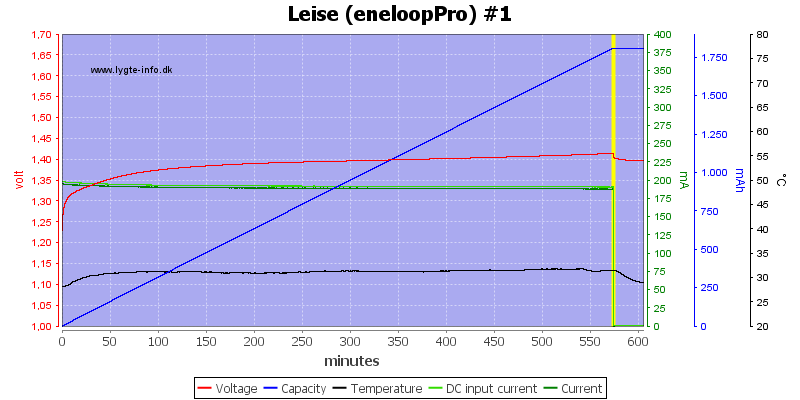
The pro is far from fully charged, the charger again used 9½ hour.
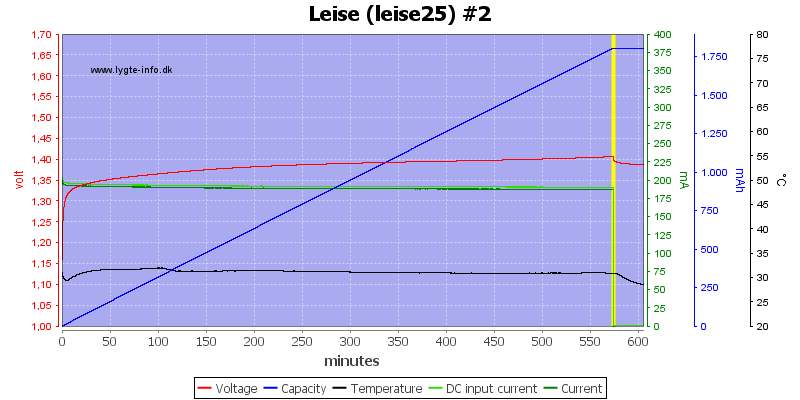
Not much surprise, 9½ hour charging and the charger stops.
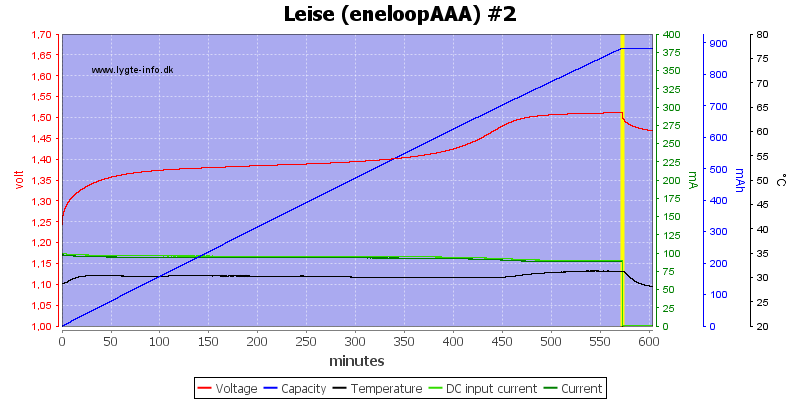
The AAA also gets 9½ hour at a lower current and is overcharged a bit.
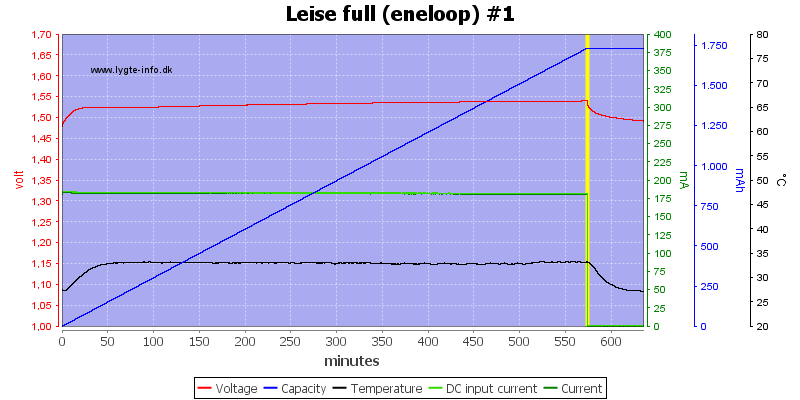
The full eneloop gets 9½ hour, that is about 9 hours of overcharge.
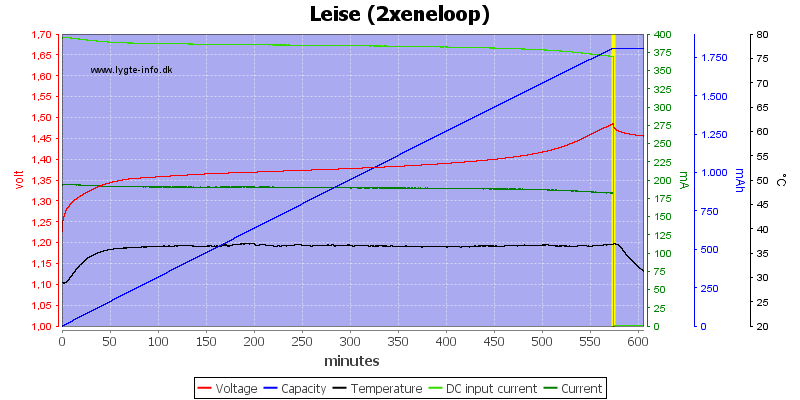
With two batteries each battery gets the same current and the same 9½ hour.
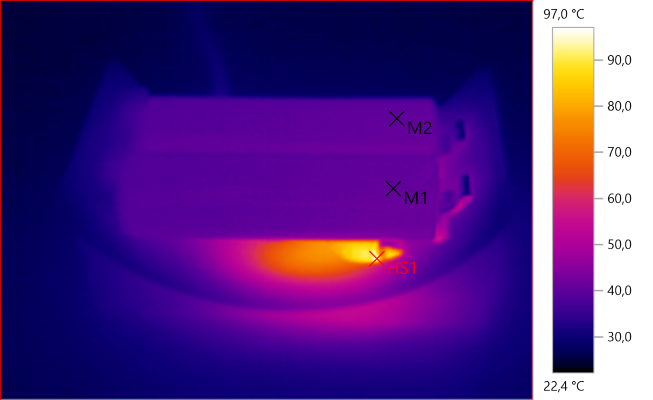
M1: 40.5°C, M2: 40.5°C, HS1: 97.0°C
The charger use a linear regulation and need to burn some power, this means there is a rather hot location on it.
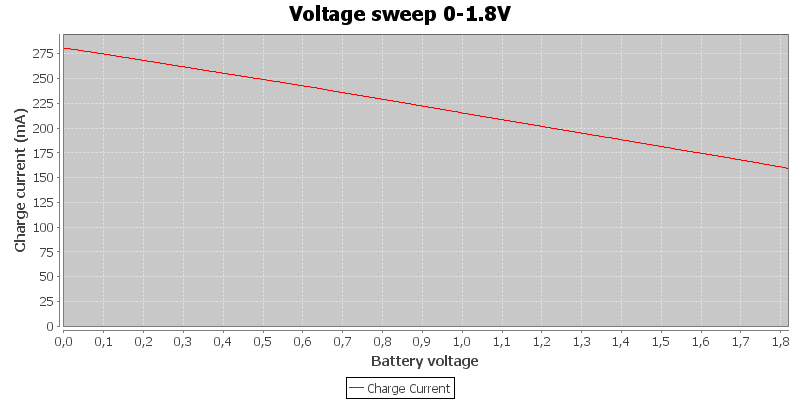
Being a very simple charger I could draw the current profile. There is no regulation.
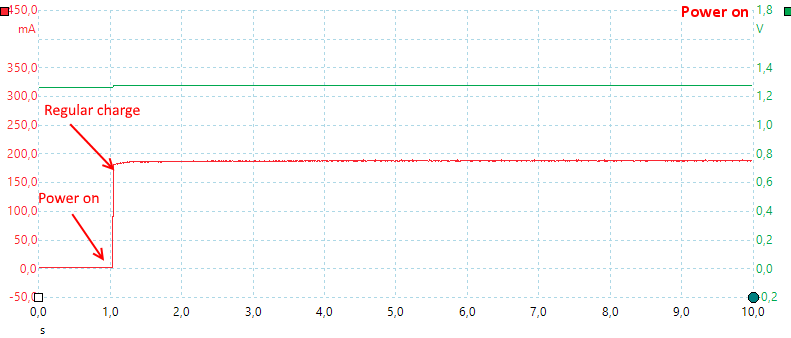
The charger do not have any controller that need time to initialize, but starts immediately
Conclusion
The charger is a very small size, due to this is can be useful, but is is very slow and use a timer based termination. The low charge current means that damage to a battery is fairly limited and the charger can be used sometimes, but it is a bad idea to use this charger as the main charger for NiMH.
I will rate it usable.
Notes
Here is an explanation on how I did the above charge curves: How do I test a charger